#African animals
Text
Proteles cristata
Throughout history, there have been two types of hyenas: bone-crushing hyenas, and dog-like ones. Spotted, striped, and brown hyenas are the bone-crushing type. Of the dog-like hyenas, the aardwolf is the only species left.

Aardwolf means "Earthwolf" in Afrikaans, a language spoken in Southern Africa. Their use of burrows is what earned them the "earth" part of their name. Although wolf is also in its name and it looks very dog-like, aardwolves are not canines. They are the smallest of four hyena species, weighing around 20 pounds (9.07 kg).
Unlike the other hyena species that eat carrion, aardwolves eat insects. If they really need to they can also eat eggs, small mammals, and vegetation, but insects are preferred. Their main insect prey is termites, and they can eat up to 300,000 of them in one night using their long tongues. Their tongues are very sticky as well, with large papillae (those little tongue bumps) and sticky saliva.
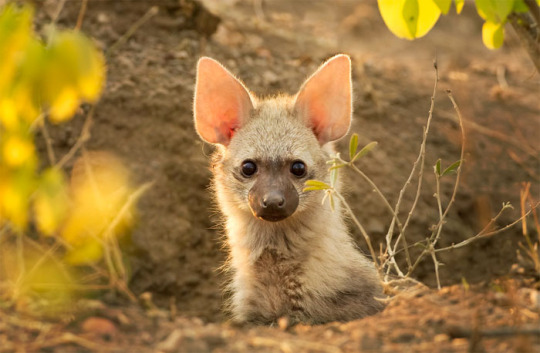
Since they behave differently and are much smaller than other hyena species, scientists used to think aardwolves were not part of the hyena family. With their striped coats, researchers thought they might have even been mimicking the striped hyena.
Aardwolves are found in arid plains of eastern and southern Africa, where they live in burrows dug by aardvarks, springhares, or porcupines. Some dig their own burrows, but taking over an abandoned one is much easier. They sleep in these burrows during the day, coming out at night to hunt for insects and to hang out with friends or whatever.
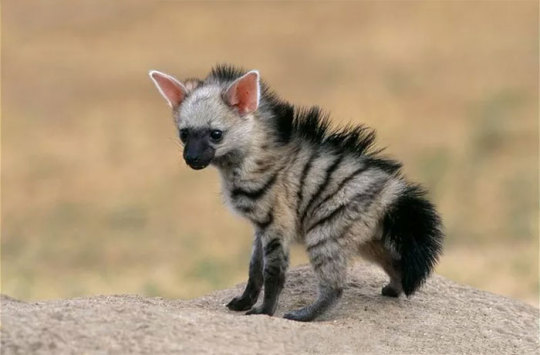

I rate the Aardwolf 15/10. Little cuties :,)

Photo Credits:
(1) Catherine Withers-Clarke (2) Hennie van Heerden (3) H. van den Berg (4) Scott Roberts (5) Klaus Rudloff
#aardwolf#CUTEEEEEEE#little guys#earthwolf#hyena#aardwolves#hyaena#biology#zoology#animals#science#nature#wildlife#african animals#cute animals#animals u should know about#miniature hyena
1K notes
·
View notes
Text
A funky dude I made for my most beloved coworker

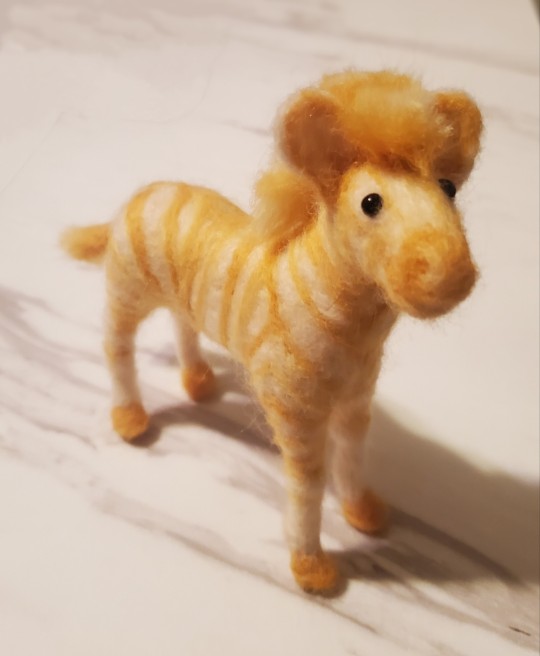
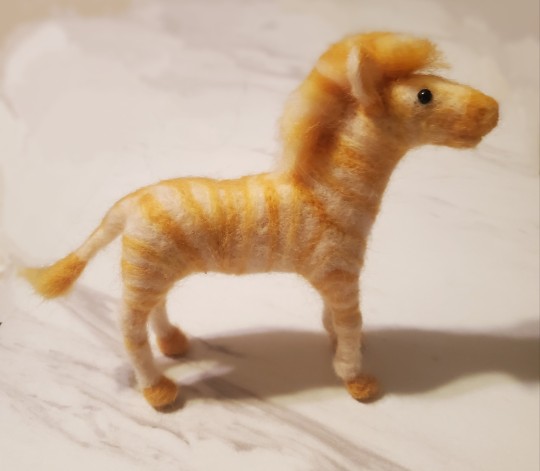


Her favorite animal and color are, of course, zebras & bright dandelion gold.
#she is 83 and was born in the same hospital as me over a thousand miles away. and now we work right next to each other!!#zebra#needle felting#fiber art#wool#my art#kreechur croft#felt art#yellow#african animals
460 notes
·
View notes
Photo
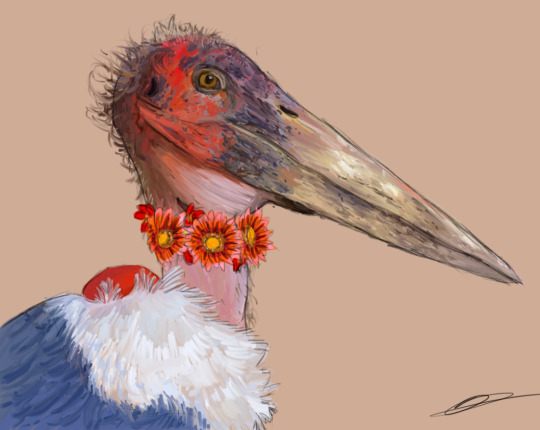


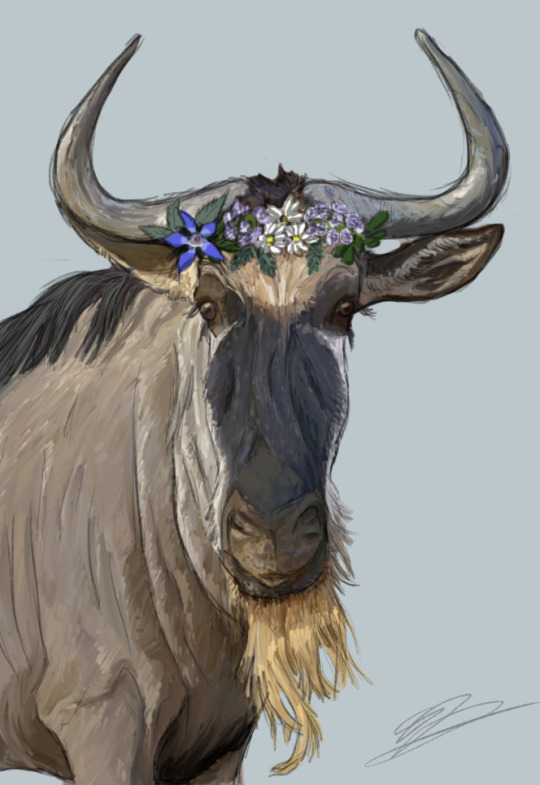

Africa’s Ugly Five
Beauty is in the eye of the beholder, and every single one of these incredible animals has a beauty all their own. Really enjoyed doing this series!
#my art#stork#marabou#marabou stork#warthog#hyena#spotted hyena#wildebeest#blue wildebeest#gnu#vulture#cape vulture#ugly five#african animals
1K notes
·
View notes
Text
For #WorldStorkDay :

Géza Vastagh (Hungarian, 1866–1919)
Three Marabous, 1909
pastel on cardboard
H 38 x W 48.5cm
Private Collection
🆔 Marabou Stork (Leptoptilos crumenifer), native to sub-Saharan Africa.
“[Vastagh’s] work is dominated by animal depictions, especially lions, but the animals of the Hungarian Puszta also influenced his work. With a government scholarship he traveled to North Africa, Algeria and Tunis in 1898 and was able to portray the animals in their natural habitat. He also found his motifs in the zoos of Berlin, Hamburg and Leipzig.”
#animals in art#animal holiday#european art#20th century art#birds in art#bird#birds#stork#Marabou Stork#African animals#pastel#drawing#Géza Vastagh#Hungarian art#World Stork Day#species ID
29 notes
·
View notes
Text


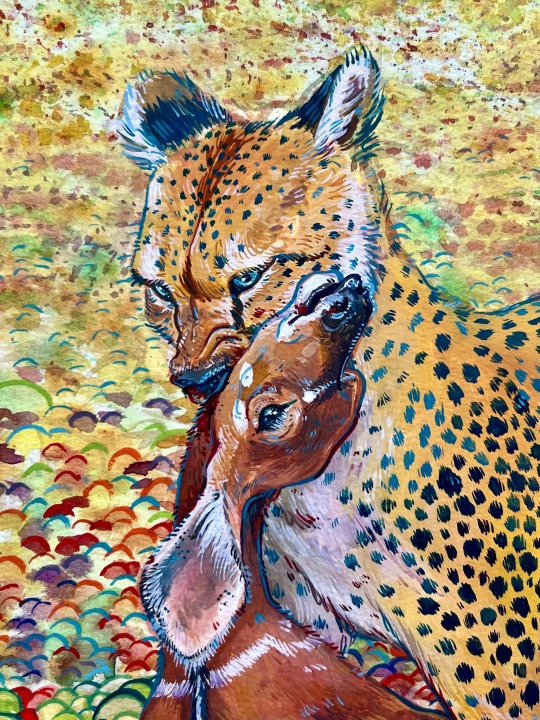
A cheetah carrying a sitatunga through an endless expanse of ripe fruit.
This piece was an enormous labor of love.
Watercolor and gouache on pressed paper, 24”x18”
#illustration#traditional art#drawing#sketch#painting#watercolor#doodle#sketchbook#art#sitatunga#cheetah#tw animal death#animal death#traditional painting#wildlife#wildlife art#fruit#animal painting#animals#African animals#Africa#artists on tumblr#arte#predator#prey
27 notes
·
View notes
Text
Hyena time!

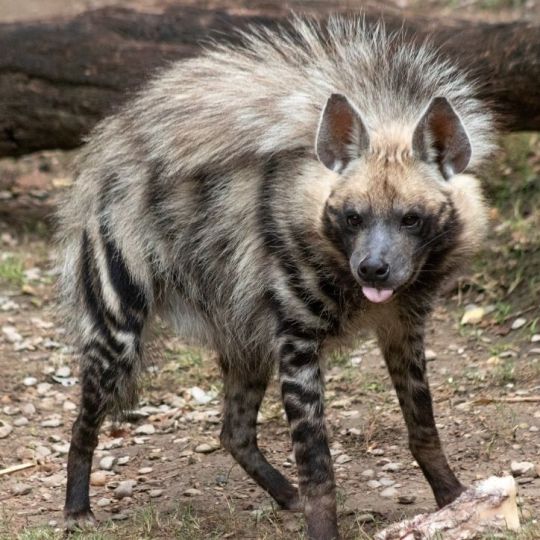

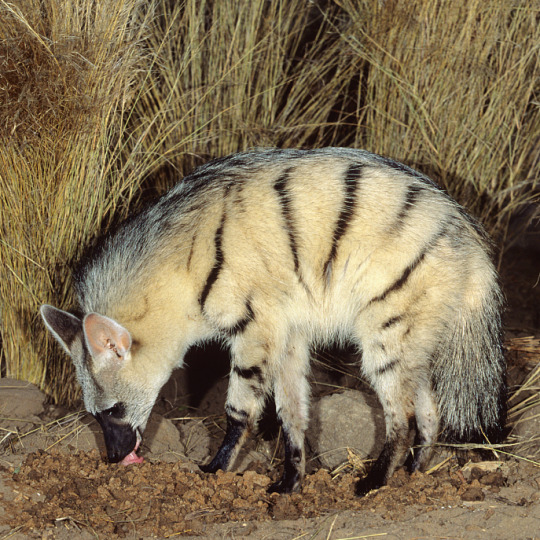
#WHOOOOP#pick your favorite#tumblr polls#poll#my polls#favorite hyena#favorite#hyena#hyenas#spotted hyena#striped hyena#brown hyena#aardwolf#hyaena#crocuta#animal#animals#african animals#carnivore#mammal#favorite animal#furry#hyena furry#hyenakin#gnoll#werehyena
185 notes
·
View notes
Text

#wild#wildlife#africa#jackal#travel#animal#namibia#etosha#etosha national park#kalahari#animals#animals of africa#wildlife photography#travel photography#animal photography#safari#savannah#namibian#black backed jackal#scavenger hunt#scavenger#african animals#travel blog#travels#african
19 notes
·
View notes
Text
I’m super interested right now in the size difference between different but similar animals that live in the same area so here have some pictures
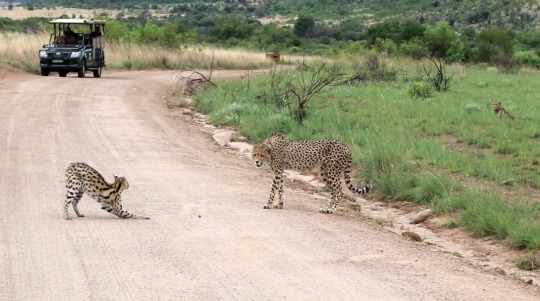
Serval and cheetah


Cheetah(s) and leopard

Lioness and leopard

Lioness and cheetah

Lion and caracal
20 notes
·
View notes
Photo
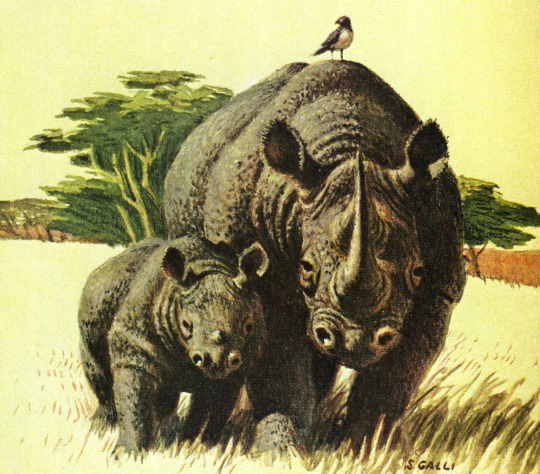
“Gun jammed, huh? Sucks to be you.”
Reader's Digest September 1972
#Illustration#vintage illustration#rhinoceros#rhino#african animals#1972#africa#1970s#1970's#funny#humor#humour
168 notes
·
View notes
Text

Huvember Entry #4
11/4/2023
#huevember#art#digital art#artists on tumblr#digital aritst#digital drawing#digital illustration#artwork#digital painting#african wild dog#african animals#canine#art challenge#art tag#illustration
29 notes
·
View notes
Text
Note: Cheetahs meow, purr, and make all kinds of odd noises shared on this blog, but here's the chirpies.
youtube
17 notes
·
View notes
Text
Parahyaena brunnea
Mostly due to habitat loss, brown hyenas are the rarest of the hyena species, with 4-10 thousand individuals in the wild. There are 30-50 thousand wild spotted hyenas, for comparison.
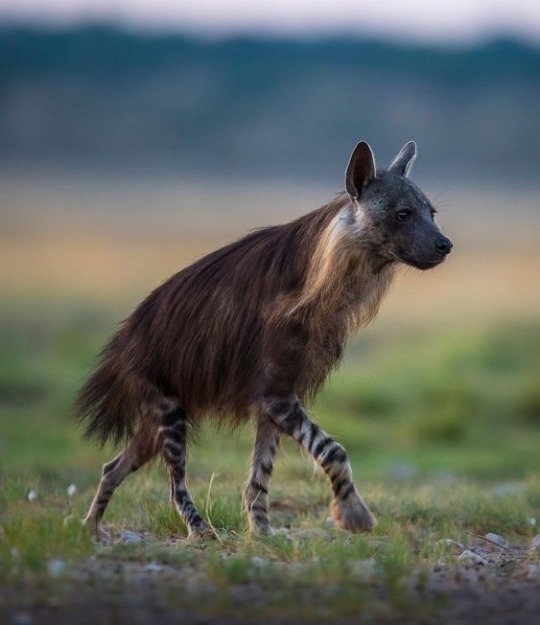
Brown hyenas are also known as strandwolves, which means "beach wolves" in Afrikaans, a language spoken primarily in South Africa. This name was given to them because brown hyenas in coastal areas spend a lot of time walking down beaches in search of food, and maybe to unwind after a long day. Some of the largest brown hyena populations are found in these coastal areas of Southern Africa, but there are also large populations in the Kalahari desert.

Although the name strandwolf suggests it, brown hyenas are not closely related to wolves or other canines. They can resemble canines, but hyenas are more closely related to cats than dogs. Their closest relatives are mongooses and civets. The photo below shows an African civet.
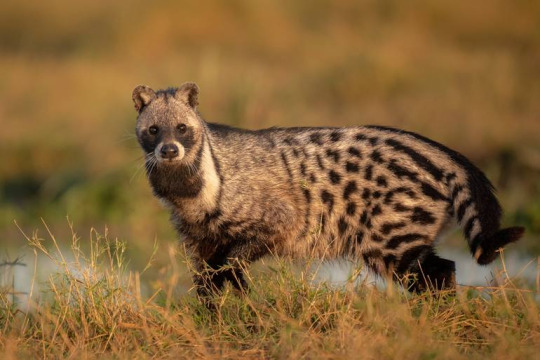
Brown hyenas are generally smaller than striped and spotted hyenas, but they can still get pretty big, weighing up to 90 pounds (40.8 kg). This size and their powerful jaws make them seem like formidable predators, but they're pretty bad hunters. They mostly scavenge for food or steal it from more capable hunters like cheetahs, leopards, and jackals. Since they can digest bones, hooves, horns, hair, and skin, they can basically eat every scrap food they find. Brown hyenas often live in groups, but this scavenging is done on their own.
Their clans are much smaller than those of spotted hyenas, and the structure is more similar to a wolf pack; most hyenas in the group are the offspring of the dominant hyenas. Brown hyenas are very social and form close bonds with other hyenas.
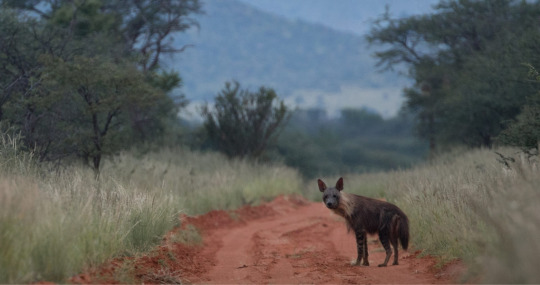
I rate the brown hyena 17/10. I like them. They seem a little bit lazy with their poor hunting skills and walks down the beach


Photo credits:
(1) Christophe Jobic (2) Mario Nonaka (3) Yarin Klien (4) Thilo Beck (5) Johan Swanepoel (6) Joel Sartore
#brown hyena#brown hyenas#hyena#hyenas#animals#biology#nature#science#wildlife#zoology#animal#wild#african animals#hyaena#south africa#Africa
403 notes
·
View notes
Text

Golden-rumped Sengi (Rhynchocyon chrysopygus) AKA Golden-rumped Elephant Shrew
Status: Endangered
East Kenya
Threats: habitat fragmentation, trapping
#look at my pretty pretty butt#golden rumped sengi#animal art#artists on tumblr#endangered animals#weird mammals#elephant shrew#nature art#digital art#daily art#african animals#kenya#sengi#mammal#africa
21 notes
·
View notes
Text
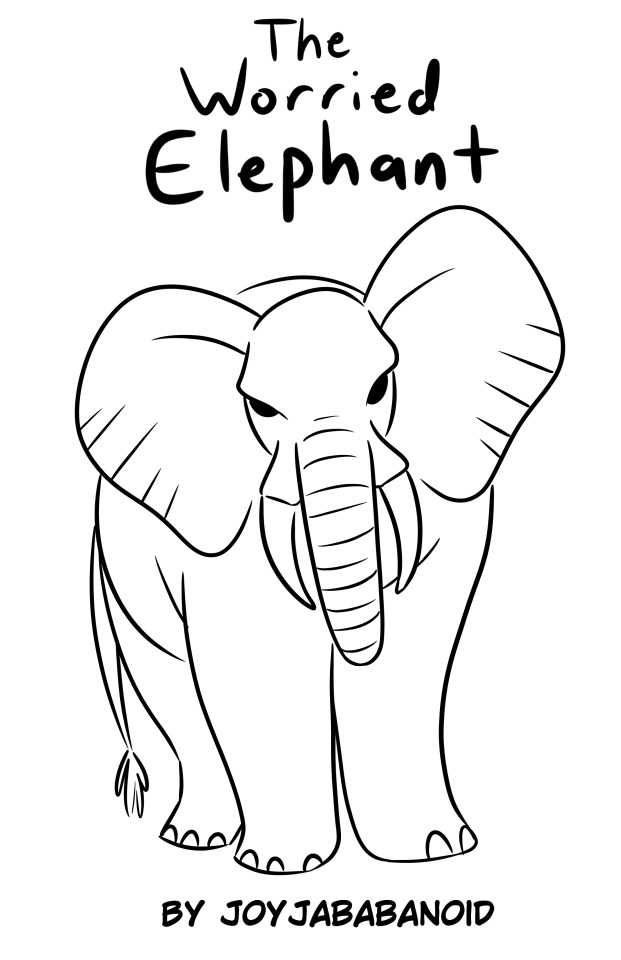
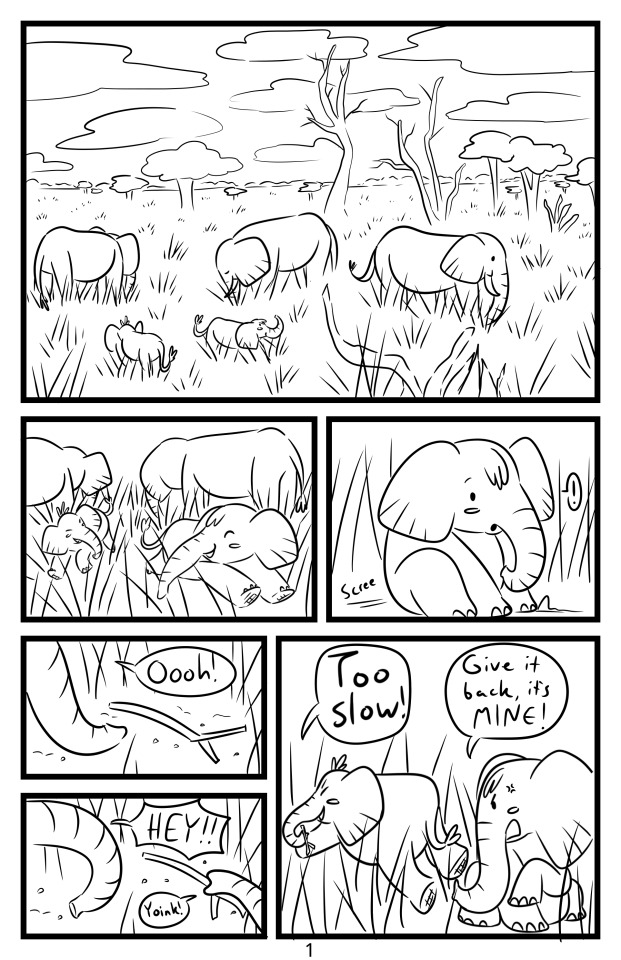



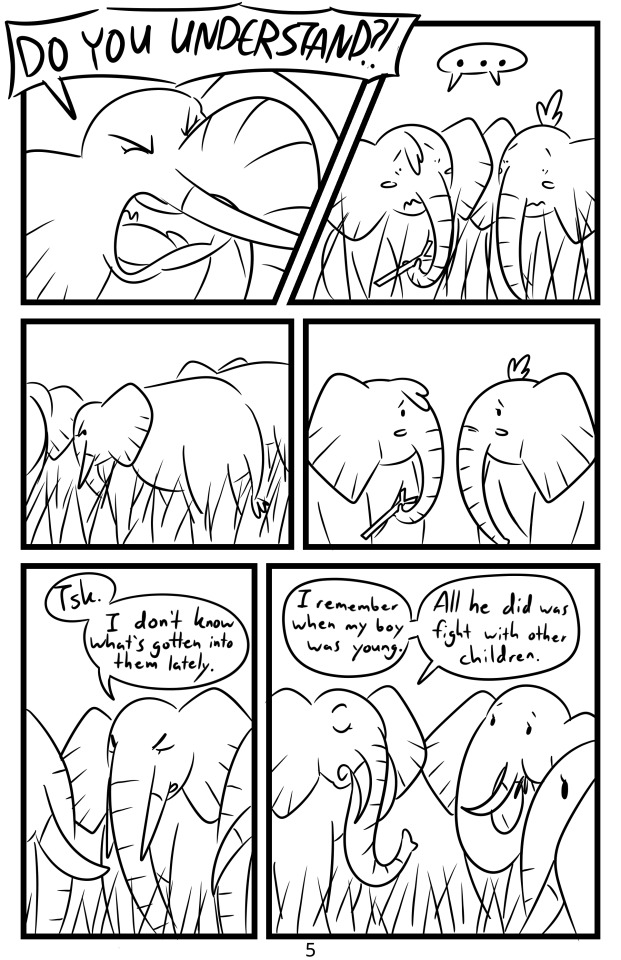






The Worried Elephant
Back in 2018 I made a bunch of comics for my family members for Christmas. It was the worst idea i ever had. I killed myself, lol. But I made a few good original comics and my family loved them, so... I guess it wasn't all bad XD
This one was made for my Mom, who loves elephants and African creatures. <3
#The worried elephant#comic#original comic#character design#character art#elephants#elephant#african animals#my art
44 notes
·
View notes
Text
It’s #WorldMeerkatDay!

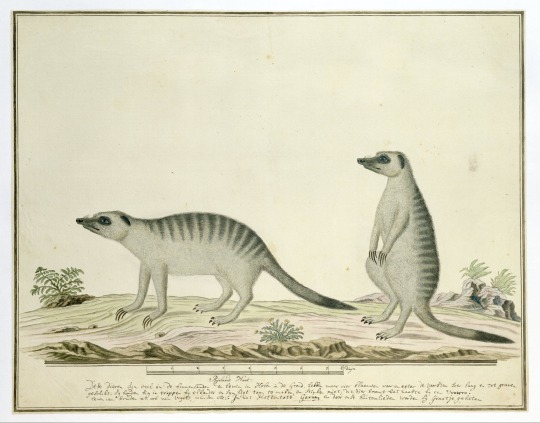
Robert Jacob Gordon (Dutch, 1743-1795)
Meerkats, 1773-80 + 1777-86
watercolor drawings from the Gordon African Collection (illustrations made during his expeditions to South Africa). Rijksmuseum collection.
#animals in art#European art#18th century art#works on paper#watercolor#illustration#historical sciart#sciart#scientific illusration#natural history illustration#Robert Jacob Gordon#Gordon African Collection#African animals#Dutch art#colonial art#Rijksmuseum#animal holiday#meerkat#meerkats#World Meerkat Day
144 notes
·
View notes
Text

Guys African wild dogs are so fun to draw
10 notes
·
View notes